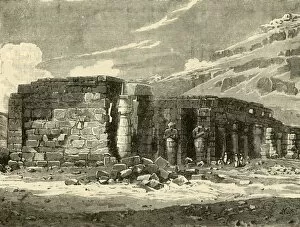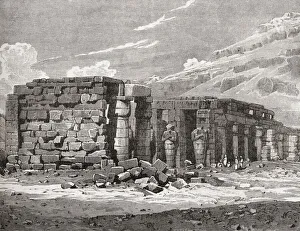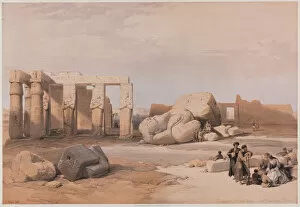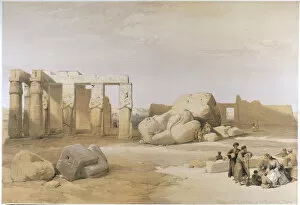Memnonium Collection
The Memnonium, located in Thebes, Egypt, is a site that holds great historical significance, and is home to the majestic Osiride Pillars and the Great Fallen Colossus
All Professionally Made to Order for Quick Shipping
The Memnonium, located in Thebes, Egypt, is a site that holds great historical significance, and is home to the majestic Osiride Pillars and the Great Fallen Colossus, which have captivated visitors for centuries. In 1857, Francis Frith captured the grandeur of the Memnonium in his photographs. One image shows the breathtaking view of the temple from the plain, showcasing its impressive architecture against a backdrop of ancient ruins. Another photograph focuses on the Osiride Pillars and Great Fallen Colossus themselves, highlighting their massive size and intricate details. The fascination with this ancient site continued throughout history. In 1838, an artist created a stunning pencil and watercolor depiction of fragments from one of the Great Colossi at the Memnonium. This artwork beautifully captures both their grandeur and decay. As time went on, more artists and photographers were drawn to Thebes' enchanting beauty. A circa 1890 photograph showcases the first court of Temple at Thebes within its vast complex known as The Memnonium or Rameseion. Robert Murray's work from 1852-55 further immortalizes this iconic place by capturing its essence during that era. Gournah (Thebes) also became part of this rich tapestry when it was photographed in 1851-52 by an unknown artist who documented Palais Dit le Memnonium's architectural splendor. Even earlier depictions exist; Berthault's artwork from around 1808 portrays Necropolis and Memnonium with remarkable precision while George Barnard's piece from c1800-1870 offers us a glimpse into what remains today - ruins that still hold echoes of past glory. In 1848 Cassells Universal History published an illustration showing how Thebes' Memnonium appeared in early nineteenth-century times – a testament to its enduring allure over generations.















